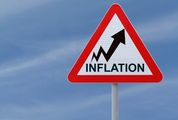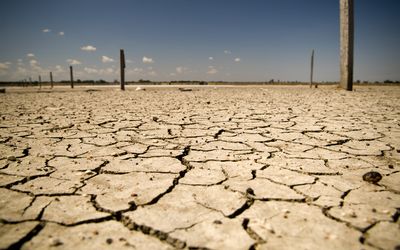SOUTH Africa’s agriculture sector is bleeding jobs as the country continues to feel the effects of the worst drought in 25 years.
Although unemployment fell to 24.5% in the fourth quarter of last year from 25.5% in the third quarter as services sectors created seasonal jobs associated with the festive period, Statistics SA officials said the job losses in the agriculture sector were the most surprising. Agriculture shed 37,000, Stats SA’s quarterly labour force survey showed on Thursday.
The "confirmation of the drought effect" on agriculture was what stood out in the survey, Stats SA’s deputy director-general for population and social statistics, Kefiloe Masiteng, said. "The growing of crops was affected a lot because of the drought."
Rating agency Moody’s, which forecasts economic growth at 0.5% for this year, has warned that the drought threatened to push SA into recession.
Job losses in agriculture are likely to continue in the first quarter of this year given that the production of summer crops, such as maize, is expected to be less than last year, Grain SA economist Wandile Sihlobo said.
"Financial strain is also one of the factors weighing on the sector. So continued financial intervention and assistance to distressed farmers will really help, especially looking ahead to the next planting season."
The drought is wreaking havoc: food shortages and quick increases in food prices. With food inflation rising, headline inflation will follow, thus encouraging more interest rate hikes by the Reserve Bank. The Treasury announced this week that R1bn would be directed to drought relief. This in on top of other loans the government has instructed the Land Bank to offer to farmers in distress.
The unemployment rate fell from 25.5% to 24.5%, the survey showed, as the services sectors such as trade added jobs associated with the busy festive period.
The expanded unemployment rate, which takes into account people who are able to work but are not actively looking, fell slightly to 33.8% from 34.4% previously.
Although the official unemployment rate had come down, it was "still sitting at dangerous rates where one out of every four people is unemployed", Ms Masiteng said.
The unemployment rate means 5.2-million people are unemployed versus 5.4-million in the third quarter. The number of unemployed was 5.8% higher compared with the last quarter of 2014 and the number of discouraged work seekers increased over the quarter, showing that weak economic activity and business confidence had had a negative effect on the labour market, Nedbank economist Johannes Khosa said.
Manufacturing also, unsurprisingly, shed jobs in the fourth quarter. The sector is under pressure from rising input costs and sluggish demand.
The jobs outlook is bleak and unemployment will remain high. The government, which has been the main driver of employment since the recession in 2009, plans to put a freeze on new jobs and do away with some positions.
Private-sector investment is also underperforming, implying muted job creation, while the effects of drought will continue to be felt in the agriculture sector long after the drought has passed.
"Recent trading updates from major retailers as well as mining and manufacturing producers reflect further cost rationalisation plans with announced reductions in headcount," Investec economist Kamilla Kaplan said.
Employment in the formal sector increased sharply in the fourth quarter while the informal sector lost 37,000 jobs.
Employment levels increased in six industries during the fourth quarter. Large employment gains were observed in the finance and other business services; trade; and community and social services (public service jobs).
Job losses were recorded not only in agriculture and mining, but also in construction, and utilities such as electricity, gas and water industries.






















Change: -0.47%
Change: -0.57%
Change: -1.76%
Change: -0.34%
Change: 0.02%
Data supplied by Profile Data
Change: -1.49%
Change: 0.08%
Change: -0.47%
Change: 0.00%
Change: -0.04%
Data supplied by Profile Data
Change: -0.34%
Change: 0.03%
Change: -0.10%
Change: -0.22%
Change: -0.81%
Data supplied by Profile Data
Change: -0.28%
Change: -1.15%
Change: -0.07%
Change: -1.21%
Change: -0.22%
Data supplied by Profile Data